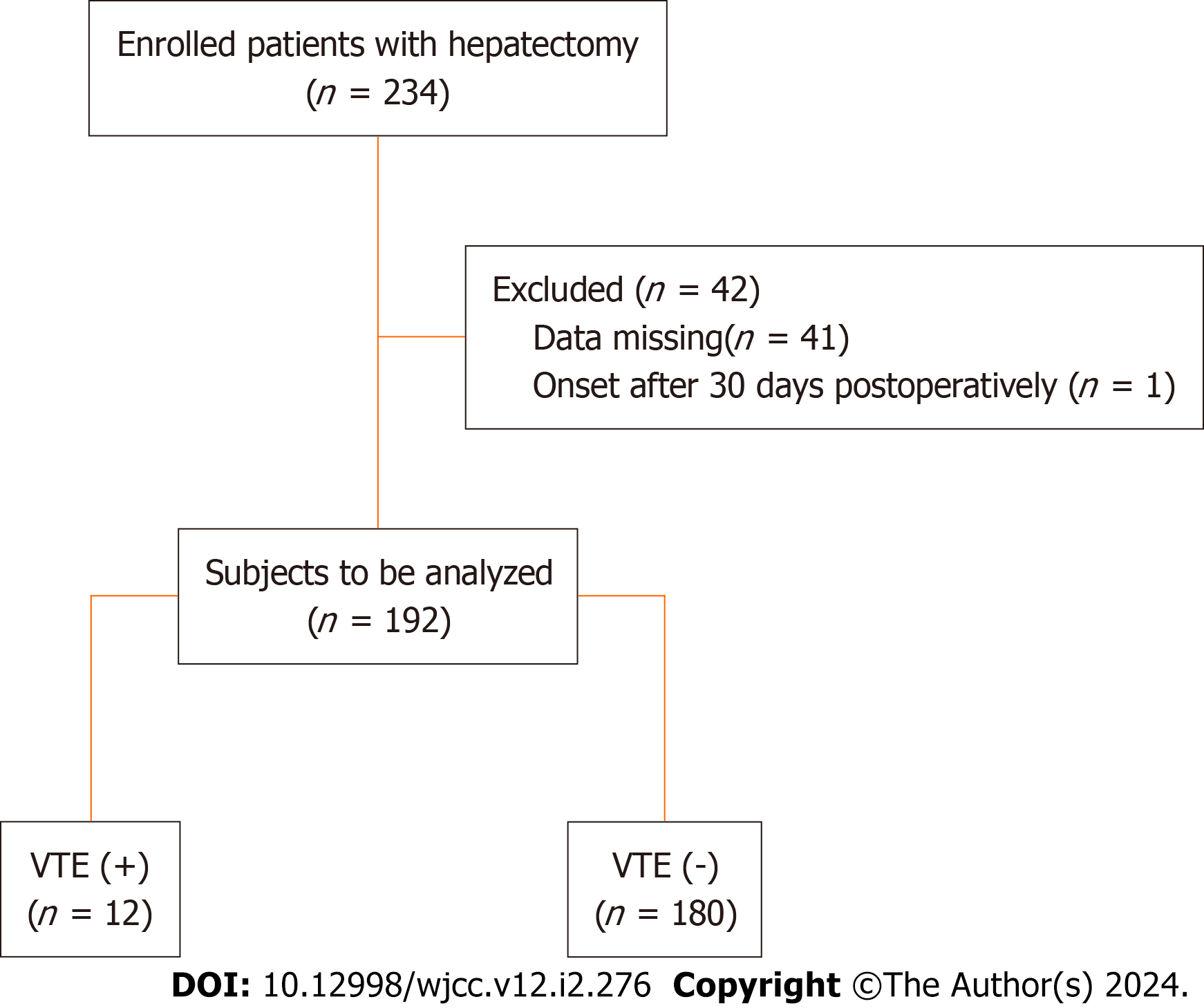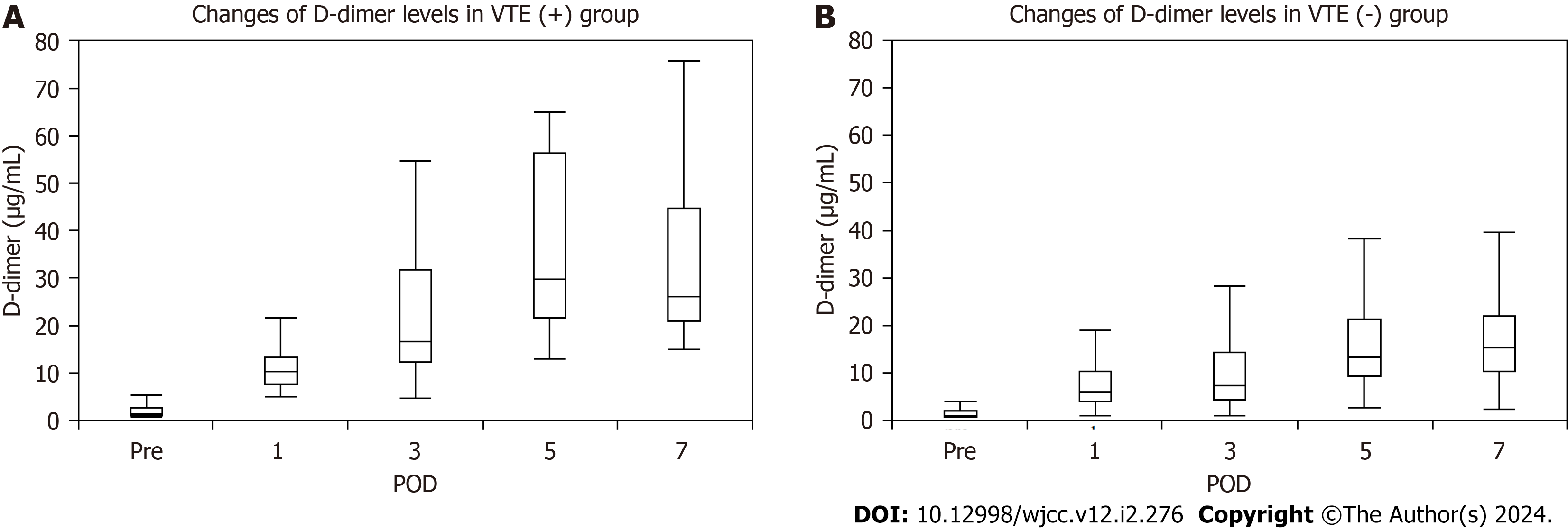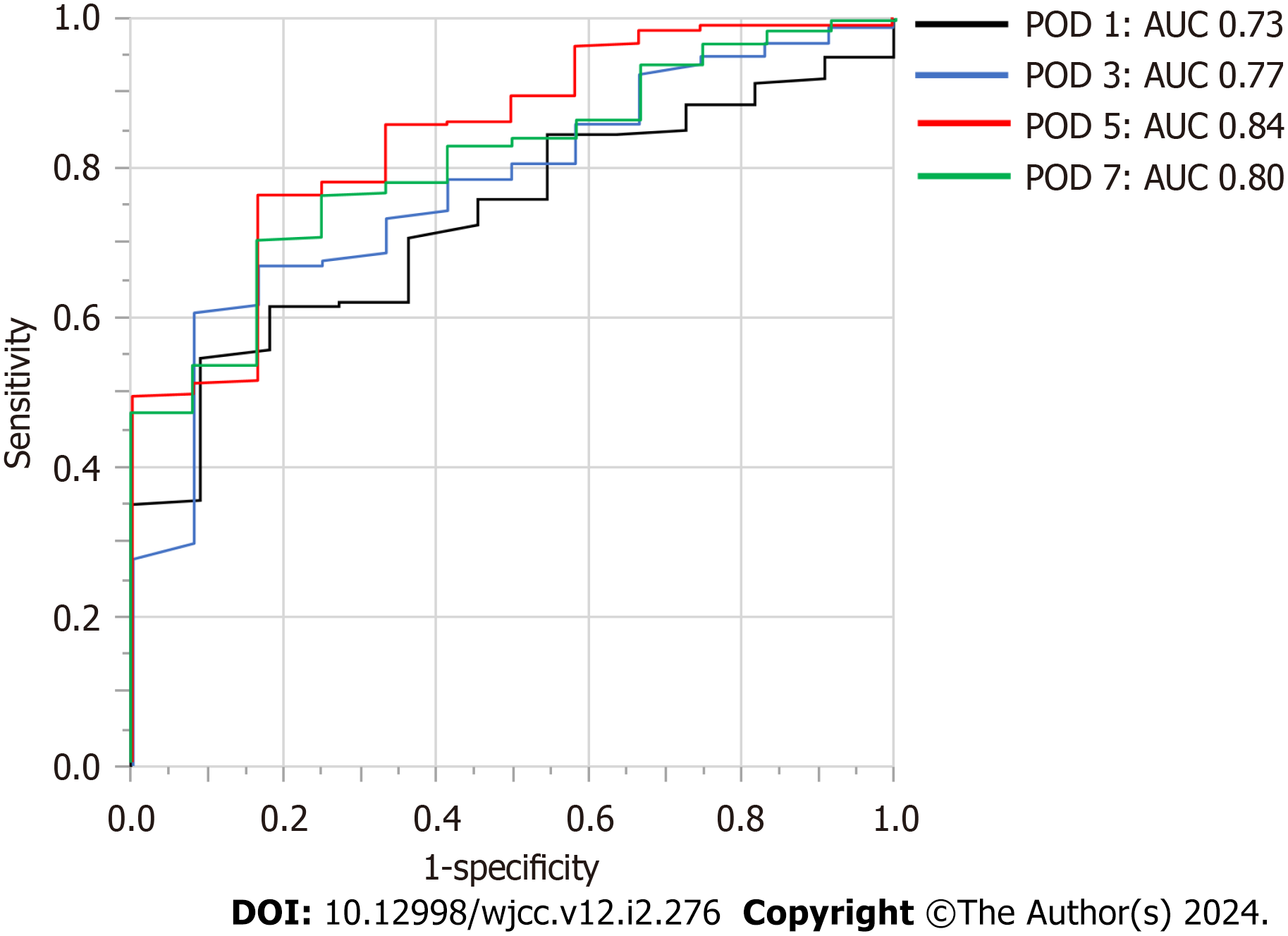Copyright
©The Author(s) 2024.
World J Clin Cases. Jan 16, 2024; 12(2): 276-284
Published online Jan 16, 2024. doi: 10.12998/wjcc.v12.i2.276
Published online Jan 16, 2024. doi: 10.12998/wjcc.v12.i2.276
Figure 1 Profiles of patients with hepatectomy who were analyzed in this cohort.
VTE: Venous thromboembolism.
Figure 2 Plasma D-dimer levels gradually increased from preoperative values to the values on postoperative day 1, 3, 5, and 7 in each group.
A and B: Plasma D-dimer levels on postoperative day 1, 3, 5, and 7 were significantly higher in patients with VTE (+) (A) than in those without VTE (-) (B). POD: Postoperative day.
Figure 3 Receiver operating characteristic analysis to set a cutoff value of D-dimer levels to detect venous thromboembolism.
Postoperative day (POD) 1: Cutoff value of D-dimer is 6 μg/mL, area under the curve (AUC) 0.73; POD 3: Cutoff value of D-dimer is 10 μg/mL, AUC 0.77; POD 5: Cutoff value of D-dimer is 21 μg/mL, AUC 0.84; POD7: Cutoff value of D-dimer is 20 μg/mL, AUC 0.80. POD: Postoperative day; AUC: Area under the curve.
- Citation: Miyake T, Yanagimoto H, Tsugawa D, Akita M, Asakura R, Arai K, Yoshida T, So S, Ishida J, Urade T, Nanno Y, Fukushima K, Gon H, Komatsu S, Asari S, Toyama H, Kido M, Ajiki T, Fukumoto T. Utility of plasma D-dimer for diagnosis of venous thromboembolism after hepatectomy. World J Clin Cases 2024; 12(2): 276-284
- URL: https://www.wjgnet.com/2307-8960/full/v12/i2/276.htm
- DOI: https://dx.doi.org/10.12998/wjcc.v12.i2.276











